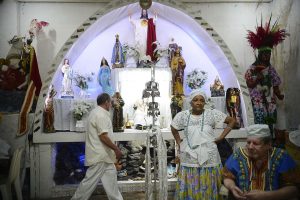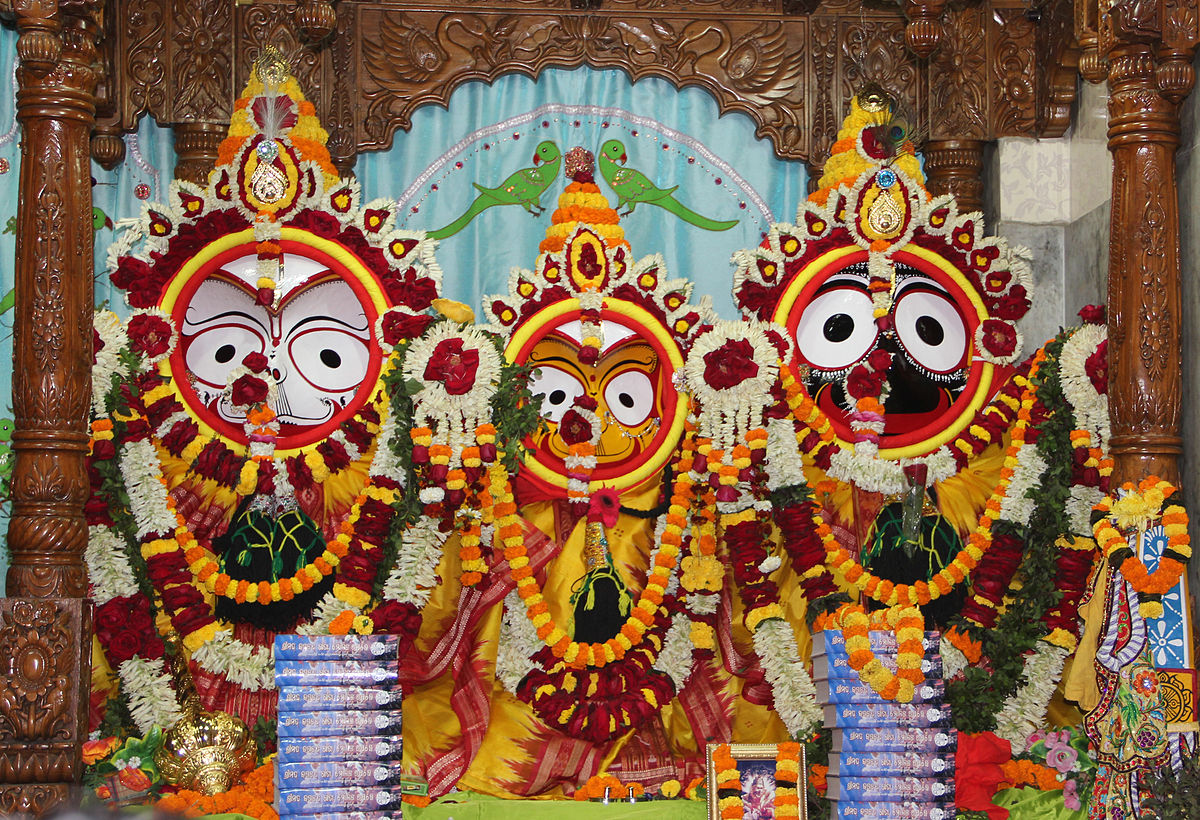Speaking of new religious movements in Brazil implies, above all, in defining what we refer to when we speak of “new religions.” We have already had an opportunity to discuss the boundaries that limit this concept[1]. Now, it seems to be a matter of showing a larger audience some of the features that this phenomenon has achieved, without, however, going into the details that his discussion may arouse.
However, we have decided to call new religious movements everything that is new in the religious field, regardless of whether they refer to new groups, or new religious experiences within the already established religions. In a broader sense, we can see that these take one of the two ends in the continuum when it comes to beliefs and values.
On the one hand, we see those that are attached to a fundamental truth, and do not accept any other possibility beyond that defended by their own group. On the other, we see a galaxy of distinct groups and isolated experiences that preach relativism, whose extremes flirt with a paradox of absolute relativism. We think that, by following this rationale, it is possible to understand current tendencies in religion and to also demonstrate some of the specific characteristics of these new religious movements which, arising in other countries, took a distinct path of development once established in Brazil.
In general terms, we have the habit of distinguishing the new religious movements by analyzing them through the glass of exoticism and the distance their messages and symbols show when compared to the already established cultural patterns – the greater the rupture, the clearer the novelty aspect of the movement. I believe that if we do not look at the characteristics of movements that occur within the large Brazilian religions, where the split is not always evident, we run the risk of not understanding what the new religious path really is about. We shall, therefore, seek to point to tendencies and novelties followed by a typology that may allow us to better understand what happens in the area.
A Brazilian characteristic that differs from that of European countries and even from the United States refers to the posture taken by the general society towards new religious groups – and this has an effect in the interpretations provided by the religious sciences about this phenomenon. As far as religions are concerned, due perhaps to our historical formation, we find great tolerance and acceptance of new ways of experiencing religiousness.
The Catholic Church is still today the religion of most Brazilians; its history was marked by a peculiar feature: the distance taken by their followers in reaction to orthodoxy and the official clergy. This allowed multiple experiences, sometimes syncretistic, or even the construction of a rustic and popular Catholicism, which distanced itself from very rigid rules. Incorporating Indigenous and African religious elements has always been a constant movement. Candomblé, although rejected in the past, is today widely accepted and institutionalized – to many, a kind of magical service that one can experience in duality with Catholicism.
More recently, with the emergence of a greater social complexity, other elements have been brought to the scene, but tolerance and integration have remained part of the practice. Several analyses point to the multiple character of Brazilian Catholicism, as well as to the constitution of a Brazilian religious ethos which is deeply syncretistic[2].
Thus, to the society, the new religions have never been seen as a threat and, except for a few cases, this field has been marked by broad tolerance. Scholars who studied these religions have, therefore, not been concerned with possible facets of these sects or cults as a threat to the integrity of families; nor have they been worried with the legal implications resulting from co-opting of youths and possible brain washing that might be part of the practice in these new groups. Only some concerns aroused from internal analysis run in the Church itself, especially in terms of the New Age, often treated as neo-paganism[3].
 A deep diversity of religious practices is manifest in Brazilian society. Boundaries are not rigid and there are multiple offers – ever so broader. Still, census data, as well as some analysis, point to the fact that the greatest variety is still seen within the Christian realm, with a significant decline in Catholicism, and an equally significant growth of Evangelic Pentecostal groups[4].
A deep diversity of religious practices is manifest in Brazilian society. Boundaries are not rigid and there are multiple offers – ever so broader. Still, census data, as well as some analysis, point to the fact that the greatest variety is still seen within the Christian realm, with a significant decline in Catholicism, and an equally significant growth of Evangelic Pentecostal groups[4].
Differing from the Christian religions and from the experiences in the diverse spiritual groups seen in the country, these new religions bypass practically unnoticed in terms of numbers, but are extremely significant if we think of their symbolic contributions and of the choices they offer.
Apart from the great variety of possibilities for experiencing Christianity – from a varied realm of understandings and practices that are seen within Catholicism to the non-ending multiplication of Evangelic sects – as well as Afro-Brazilian traditions such as Candomblé and Xangô; Umbanda and Spiritism in all its variants; Indigenous traditions; and foreign religions restricted to ethnic groups, we also have an enormous variety of other religions or different religious practices.
We find, for example, typically national constructions, such as the cult to Santo Daime and Vale do Amanhecer [Valley of Dawn]; or imported constructions, such as ISKCON (The International Society for Krishna Consciousness), the Unification Church, Tibetan Buddhism, or even spiritualist practices – which are far from becoming religious movement strictly speaking – such as Mahikari, a variety of oracles or sacred circular dances and Xamanism of the New Age.
Assessment carried out by scholars point to some possibilities. Brandão[5] sees this as a society in which individuals gain more autonomy and seek to produce their own meaning systems. To Carvalho[6], religious diversification expresses cultural diversity. Camurça[7] points to two tendencies seen in the analysis of religious social scientists in Brazil: on the one hand, we have the new religious movements as a result of a more intense secularization[8]; on the other, we see clear signs of people becoming delighted with the world once again[9]. The author states that the new religious movements allow us to see the non-exclusive tension between these extremities; only by so doing could we understand the religious effervescence in an increasingly modern society.
As far as I can understand, new creeds and religious experiences appear historically, bringing with them the traces of the society in which they are encompassed. This is the case of ISKCON – which arrived in Brazil in 1974 and is until today the more solid Eastern religious institution in the country, besides those bound to ethnic groups. If, at first, it seemed to be an exotic experience of an Eastern spirituality, today it is part-and-parcel of the broader Brazilian religious scenario, and competes for space against other groups. This change forced ISKCON to adapt to the Western way of life[10]. The Hare Krishna Movement is, or at least, seeks to be, the same everywhere, but in the end, it takes local characteristics due to stereotypes found in the culture in which it is inserted, and due to the idiosyncrasies of their leaders.
Generally speaking, considering that the expansion of this movement began in the USA, the American ethos has imprinted in ISKCON a rigid structure closer to some Christian churches than to an Eastern sect. Among us it is interesting to notice a certain parallelism between ISKCON and certain independence characteristics that face orthodoxy, syncretism and mobility. This form of living the religion ended up influencing the paths taken by ISKCON around here. Far from being a Hindu approach within the traditional models of experience and learning, which follows a guru, ISKCON is another Western religion with Vedic creeds, myths and symbols.
Considering the general characteristics of the Brazilian religious field, we can now trace a typology that might allow us to perceive the broader dynamics of the new religions.
Firstly, we can pinpoint new movements within the already established large religions. This is the specific case of the charismatic Catholic movement and the expansion of neo-Pentecostal churches. These have undoubtedly the more significant number of participants of all movements. It is worth highlighting that these are not usually seen as new religions, but we have chosen to frame them differently due to the innovative character that they adopt in our society. There are even some scholars that visualize similarities between Pentecostalism and the New Age[11].
We can, from the beginning, perceive that we are dealing with internal conversion, i.e., a shift by those that already followed a certain religion. Considering that the population is hegemonically Christian, these people come from inside these very religions and are converted to these new movements without needing to break with their own realm of beliefs. A minority, on the contrary, ends up coming from outside the religious field. This is usually the case of youths, such as the neo-Pentecostal groups Igreja Bola de Neve and Sara Nossa Terra. All of them accept the general culture, the orthodoxy, and Ecclesiastic hierarchy, but they all saw the rupture necessary because they believe that the system followed by the old churches does not allow for the understanding of the true message left by Jesus.
 The great novelty is in the magical dimension of the new religions, which takes large proportions. Salvation is individualized and there is new meaning to traditional symbolic elements. There are also those that come from other religious denominations, such as Umbanda or Spiritism, for example. Elements from these matrices are also incorporated and re-signified. As a stronger theological feature, we have the acceptance of absolute truth, which, many times, generates fundamentalist position-taking.
The great novelty is in the magical dimension of the new religions, which takes large proportions. Salvation is individualized and there is new meaning to traditional symbolic elements. There are also those that come from other religious denominations, such as Umbanda or Spiritism, for example. Elements from these matrices are also incorporated and re-signified. As a stronger theological feature, we have the acceptance of absolute truth, which, many times, generates fundamentalist position-taking.
A second group can be categorized by religious movements external to the larger constituted religions. This encompasses the formation of new groups with a strong emphasis on the search for salvation from the evil that is seen in the world today. They deny and break with the larger culture and religious orthodoxy. They seek to recover a lost tradition and vary as to how this salvation will take place. Some present a typically religious form, with ecclesiastic hierarchy, the creation of a moral community and rigid doctrines. This is the case of the already cited ISKCON.
Others take on less rigid characteristics, such as the Osho Brazil Institute (Rajneesh), Ananda Marga, the Brahma Kumaris Organization, the Sathya Sai Baba Organization, Santo Daime, União do Vegetal, Barquinha and others. They form anything type of gathering from rural communities to devout centers in larger cities. Because they argue for a sole truth and deny other paths, they end up taking a typically fundamentalist position. Their followers are generally not part of religious fields, at least not as far as the large traditional religions are concerned. They seek these religious movements for an experience that differs from the education they have received.
There is great dissatisfaction with the instituted religions. Despite the sects’ often enclosed structures, their followers usually go through these religious centers, often taking up temporary identities rather than multiple identities. A Krishna follower today might be a follower of Sai Baba tomorrow. There is also the creation of new identities, of multiple blending, such as “Hare daimista.”
Generally speaking, the sociologic division typically comes from higher social classes, highly educated, and followers come from lower classes. These are the ones that are seen in the traffic and are many times taken as “vagrants.” While the leadership takes on a more fundamentalist position, the speech among the latter is often more flexible. We can include in this category the more ecumenical groups, with no rigid religious boundaries, and that preach an eclectic truth, no less fundamental, though. Among these we can find Vale do Amanhecer and Legião da Boa Vontade [Legion of Good Will]. We see a certain environmental emphasis in some of these groups, as well as a strong sense of re-signifying symbols from Brazilian culture.
 The third group can be attributed to the new Eastern religions. Generally initiated within ethnic communities, especially in the Japanese community, it expands and gains followers from the broader society. Their doctrine has well-defined boundaries, and their truth is established. They seek to construct a new era and are organized around a charismatic leader. Some examples of these religions are Soka Gakkai, Igreja Messiânica [Sekai Kyusei Kyo], Mahikari, Igreja da Unificação [Unification Church], Perfect Liberty, Seicho-No-Ie, among others. Despite their tolerant speech, we can understand that these groups tend to a certain fundamentalism in the sense of believing their truths are superior to those of others.
The third group can be attributed to the new Eastern religions. Generally initiated within ethnic communities, especially in the Japanese community, it expands and gains followers from the broader society. Their doctrine has well-defined boundaries, and their truth is established. They seek to construct a new era and are organized around a charismatic leader. Some examples of these religions are Soka Gakkai, Igreja Messiânica [Sekai Kyusei Kyo], Mahikari, Igreja da Unificação [Unification Church], Perfect Liberty, Seicho-No-Ie, among others. Despite their tolerant speech, we can understand that these groups tend to a certain fundamentalism in the sense of believing their truths are superior to those of others.
Finally, the fourth type, broader and more diverse, is formed by sparse groups, with no fixed leadership, imprinted by occultism and esotericism, many times identified as New Age. They are largely attended by followers of other religious denominations, especially because they have no rigid boundary, and many state that they are non-religious groups. Most of them are formed within higher social classes and have equally high schooling levels. Many of these groups are not new in Brazil and would not be included in rigid definitions of new religious movements that might see the launching as an excluding criterion. This is the case of the Rosicrucian Order and the Círculo Esotérico da Comunhão do Pensamento [the Communion of Thought Esoteric Circle].
Others are more recent, such as Anthroposophy, Esoteric Umbanda, the several New Age groups, the urban Xamanisms, etc. Emphasis is many times seen in a search for truth through studies, as well as a search for using the mind with greater potential, and broadly transforming the individual. In many of these groups, one can see a strong appeal to relativism, not only because of the incorporation of religious symbols from rather different and distant cultures, but also because of their speech that all paths are valid in order to reach illumination. We can even see that excessive values end up generating a lack of these very values and that the absolute flexibility is transformed into a new fundamental truth.
We sought to show that new religions in Brazil cannot be understood in their theological novelty only, nor in terms of their time of existence, but from a standpoint of the novelty they represent in terms of experiences and practices. Thus, movements that are not necessarily considered as new could be analyzed in the same category as other, more recent movements, since both are part of the new religious boundaries seen in Brazilian society. When it comes to the game played by these religions, living together in the same society, we sought to demonstrate that not all of them act with the same degree of tolerance and acceptance of the world, nor in terms of preaching of truths and well-established dogmas. Thus, we can see relativist or fundamentalist tendencies among these groups, which allow us to understand the dynamics of the game played by new religions.
Silas Guerriero is Anthropologist and Associate Professor of the Science of Religion Department and
of the Post-Graduate Program of Religious Studies of the Pontifical Catholic University of São Paulo,
PUC-SP. He acts works in the area search of the Anthropology of Religion, especially new religious
movements and religion in modernity.
[1] Guerriero, Silas. (2004) A visibilidade das novas religiões no Brasil. In: B.M.de Souza e L.M.S.Martino (orgs), Sociologia da religião e mudança social, São Paulo, Paulus, pp. 157-173.
[2] Sanchis, Pierre. (1997) O campo religioso contemporâneo no Brasil. In: A.P. Oro e C.A. Steil (orgs), Globalização e religião, Petrópolis, Vozes, pp. 103-115; Carvalho, José Jorge. (1999) Um espaço público encantado: pluralidade religiosa e modernidade no Brasil. Brasília, UnB (série antropologia nº 249).
[3] Kolling, João Inácio. (1997) Reencantamento e dessecularização. A propósito de um auto-engano em sociologia da religião. Novos Estudos Cebrap, 49: 99-117; Almeida, João Carlos. (1997) Nova era e fé cristã. São Paulo, Loyola.
[4] Pierucci, Antônio Flávio. (2004) “Bye, bye, Brasil” – o declínio das religiões tradicionais no censo 2000. Estudos avançados, 18 (52): 17-28. 8
[5] Brandão, Carlos Rodrigues. (1994) A crise das instituições tradicionais produtoras de sentido. In: A.Moreira e R.Zicman (orgs), Misticismo e novas religiões, Petrópolis, Vozes, pp. 23-41.
[6] Carvalho, José Jorge. (1999) Um espaço público encantado: pluralidade religiosa e modernidade no Brasil. Brasília, UnB (série antropologia nº 249).
[7] Camurça, Marcelo Ayres. (2003) Secularização e reencantamento: a emergência dos novos movimentos religiosos. BIB- Boletim Informativo de Ciências Sociais, nº 56: 55-69.
[8] Pierucci, Antônio Flávio. (1997) Reencantamento e dessecularização. A propósito de um auto-engano em sociologia da religião. Novos Estudos Cebrap, 49: 99-117.
[9] Souza, Luiz Alberto Gómez de. (1986) Secularização em declínio e potencialidade transformadora do sagrado. Religião e sociedade, 13 (2): 2-16; Sanchis, Pierre. (1998) A religião dos brasileiros. Revista Horizonte, 1 (2): 28-43.
[10] Guerriero, Silas. (2000) L´ISKCON au Brésil: la transformation occidentale d´une religion védique. Social Compass, 47 (2): 241-251.
[11] Velho, Otávio. (1997) Globalização: antropologia e religião. In: A.P. Oro e C.A. Steil (orgs), Globalização e religião, Petrópolis, Vozes, pp. 43-70.




